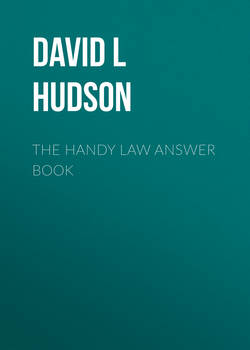Читать книгу The Handy Law Answer Book - David L Hudson - Страница 71
What were some important precursors to Marbury v. Madison?
ОглавлениеMarbury v. Madison (1803) is rightfully considered the leading decision on judicial review since it was decided by the U.S. Supreme Court. However, it did not occur in a vacuum, as a few state courts had already assumed the power of judicial review to invalidate laws. These include Rutgers v. Waddington (1784), Trevett v. Weeden (1786), and Bayard v. Singleton (1787).
The Rutgers decision involved a British merchant named Waddington, who occupied the property of Rutgers under orders from the British military during the Revolutionary War. The legal issue concerned whether Waddington could be convicted of trespassing for invading the property of an American citizen. Alexander Hamilton defended Waddington, arguing that the New York trespass law must yield to a 1783 treaty between the United States and Great Britain that prohibited the punishment of British sympathizers (called Tories or Loyalists) for conduct during the war.
The Trevett decision concerned the prosecution of butcher James M. Varnum for violating a Rhode Island law that punished those who refused to accept paper money. The Rhode Island court struck down the state law, causing an outrage in the legislature. The legislature called the judges before it to question them for their act of striking down a state law. The legislature even refused to reappoint four of the five judges.
In Bayard, Elizabeth Bayard sought to recover property confiscated because her father was a Loyalist. The owner of the property, a Mr. Singleton, had purchased the property from the state of North Carolina. The North Carolina court ruled in favor of Bayard, striking down the Confiscation Act, passed by the North Carolina General Assembly during the American Revolution. The judges determined that the confiscation law violated the North Carolina Constitution’s provision for trial by jury and determined that Bayard should have the opportunity to present her case before a jury.
These three decisions served as key precedents on the road to Marbury v. Madison.
